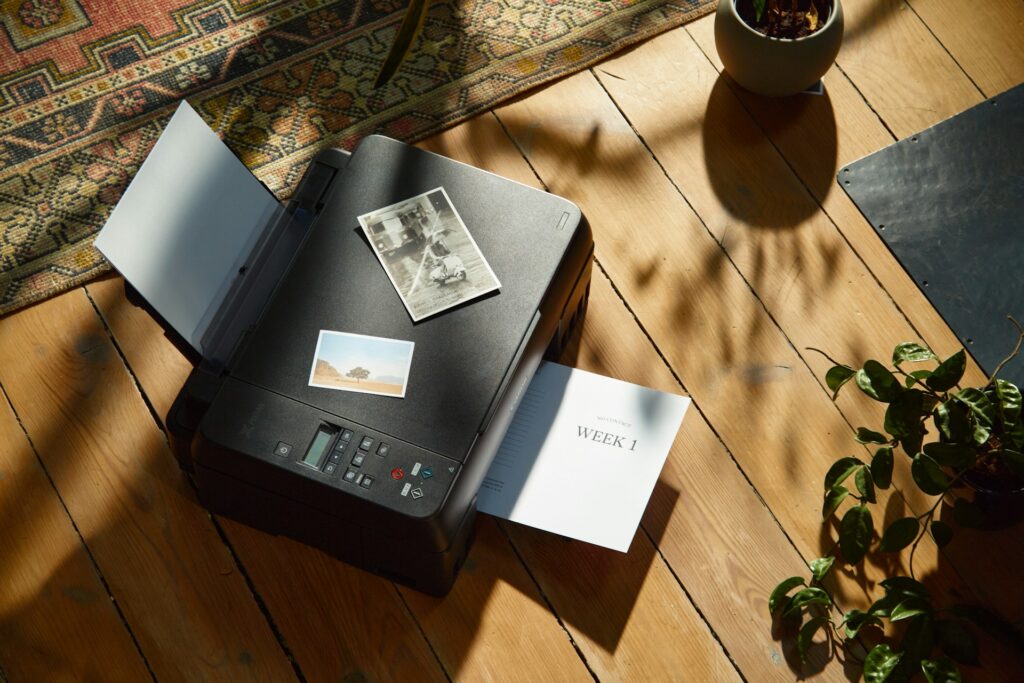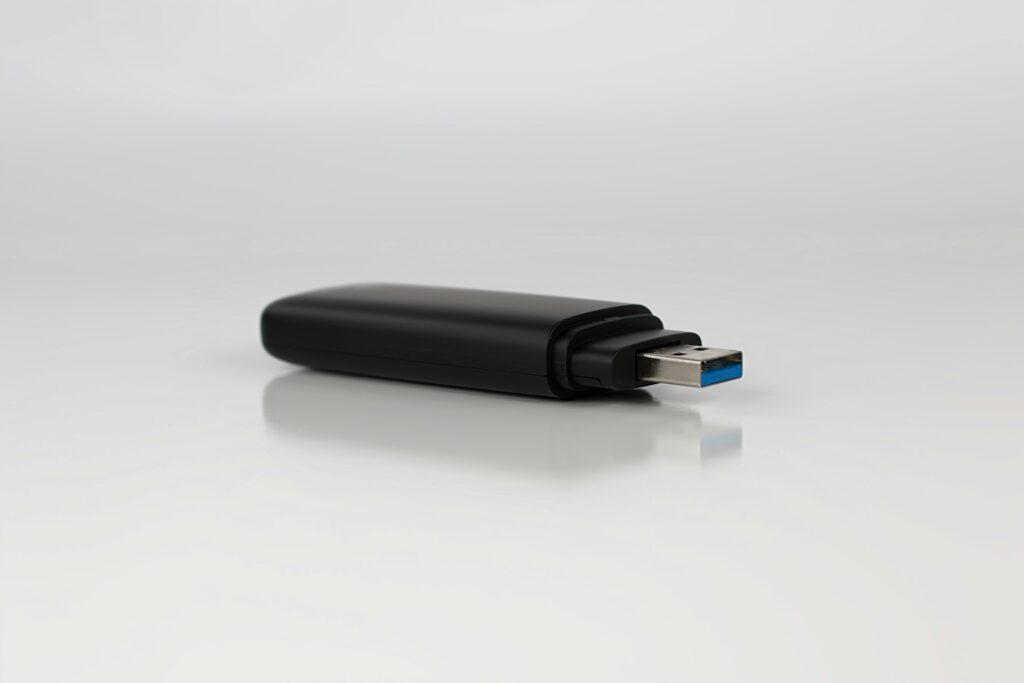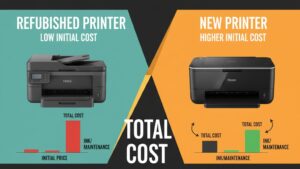Introduction
Is your printer saying no paper but there is paper loaded in the tray? This frustrating error message can halt your printing tasks at the most inconvenient times, leaving you puzzled when you can clearly see a full paper tray. Whether you’re using an HP, Canon, Epson, Brother, or any other printer brand, paper detection issues are surprisingly common and often stem from simple causes that you can fix yourself. In this comprehensive troubleshooting guide, we’ll walk through eight effective solutions to resolve paper sensor problems, explain why they occur, and help you get back to printing without the annoying false “load paper” messages interrupting your workflow.
What Is Printer Paper Detection?
Printer paper detection is the mechanism that allows your printer to sense whether paper is available in the input tray before attempting to print. This system typically consists of mechanical sensors, optical detectors, or a combination of both that work together to confirm paper presence and position. When functioning correctly, these sensors prevent your printer from attempting to print when genuinely out of paper, protecting the print heads and internal mechanisms from damage.
Most modern printers employ one of three detection methods:
- Mechanical lever sensors – Physical arms that are pushed up when paper is present
- Optical sensors – Light-based detectors that recognize paper by sensing changes in reflected light
- Ultrasonic sensors – Found in higher-end printers, these detect paper thickness and presence without physical contact
When these detection systems malfunction or become obstructed, your printer may incorrectly report “no paper” or “load paper” errors despite having a full paper tray. These false alarms typically result from sensor misalignment, paper dust accumulation, worn-out components, or software communication errors between the printer and your computer.

8 Ways to Fix When Your Printer Says No Paper But There Is Paper
When your printer refuses to acknowledge the paper in its tray, try these proven solutions in sequence, starting with the simplest fixes before moving to more involved troubleshooting steps.
1. Remove and Properly Reload Paper
The most fundamental solution often solves the problem immediately:
- Remove all paper from the input tray completely.
- Fan the paper stack by holding it at one end and gently fluffing the opposite edge. This separates sheets that might be sticking together.
- Inspect for damage – Remove any bent, torn, or wrinkled sheets.
- Align the edges by tapping the stack on a flat surface to ensure all corners are perfectly aligned.
- Check paper specifications – Confirm you’re using the correct paper weight and type recommended for your printer.
- Reload properly – Insert paper according to your printer’s loading indicators, making sure not to exceed the maximum capacity line.
- Adjust paper guides – Position the guides to touch the paper edges gently without bending or constraining the stack.
This simple process realigns sheets and ensures proper contact with the sensors, often immediately resolving detection issues.
2. Clean the Paper Sensors
Dust and paper debris can accumulate on sensors, blocking their ability to detect paper:
- Power off and unplug your printer for safety.
- Locate the paper sensors – These are typically small plastic or metal components near the paper tray (consult your printer manual for exact locations).
- Use compressed air to gently blow away dust and paper particles without touching the sensors.
- For stubborn debris, lightly dampen a cotton swab with isopropyl alcohol and carefully clean the sensor surface.
- Allow to dry completely before reconnecting power.
- Restart your printer to reset the sensor system.
Many printer service technicians report that simply cleaning these sensors resolves approximately 40% of paper detection problems.
3. Check for and Clear Paper Jams
Sometimes hidden paper jams can trigger false “no paper” errors:
- Power off your printer before attempting to remove jammed paper.
- Check all access points including the paper input tray, output tray, rear access panel, and cartridge area.
- Look for torn pieces of paper that might be lodged in corners or under rollers.
- Remove jammed paper by gently pulling in the direction of normal paper flow (never force it).
- Use a flashlight to inspect hidden areas where small paper fragments might be trapped.
- Close all doors securely after clearing jams.
- Restart your printer to clear the error state.
Even tiny fragments of paper can interfere with sensor operation, so be thorough in your inspection.
4. Reset Your Printer
Resetting can clear temporary software glitches affecting paper detection:
- Turn off your printer using the power button.
- Disconnect the power cable from both the printer and the wall outlet.
- Wait 60 seconds to ensure complete power drainage from internal components.
- Reconnect power and turn the printer back on.
- Allow full initialization before attempting to print again.
- Perform a printer self-test (typically available through printer settings) to verify hardware functionality.
For some printer models, you may need to perform a factory reset:
- HP printers: Hold the “Cancel” button for 5-10 seconds
- Canon printers: Look for “Device settings” > “Reset setting”
- Epson printers: Power on while holding the “Stop” or “Reset” button
- Brother printers: Access the “Reset” option in the “General Setup” menu

5. Update or Reinstall Printer Drivers
Outdated or corrupted drivers can cause communication errors with paper sensors:
- Check current driver version through your printer properties or manufacturer’s software.
- Visit the manufacturer’s website to find the latest driver for your specific printer model.
- Download the correct driver for your operating system version.
- Uninstall the existing driver through your computer’s Control Panel (Windows) or System Preferences (Mac).
- Restart your computer before installing the new driver.
- Follow the installation prompts carefully, allowing all components to install completely.
- Restart your computer again after installation.
Manufacturer-provided drivers often include specific fixes for paper detection issues that generic operating system drivers lack.
6. Inspect and Clean the Paper Feed Rollers
Worn or dirty feed rollers can affect paper movement and trigger sensor errors:
- Power off and unplug your printer.
- Locate the feed rollers – These rubber or plastic wheels grip and move paper through the printer.
- Check for visible wear or damage – Shiny, smooth surfaces indicate worn rollers that may need replacement.
- Clean the rollers by gently wiping with a lint-free cloth slightly dampened with water or isopropyl alcohol.
- Rotate the rollers manually to clean the entire surface.
- Allow to dry completely before reassembling and testing.
For stubborn dirt or ink buildup, specialized printer roller cleaning kits are available from office supply stores.
7. Adjust Paper Tray Settings
Incorrect paper settings can confuse the printer’s detection system:
- Access printer settings through your computer or the printer’s control panel.
- Locate paper configuration options such as size, type, and tray settings.
- Ensure settings match your actual paper (e.g., if using A4 paper, the setting should specify A4).
- Check “Paper Handling” settings to verify the correct tray is enabled.
- Consider using “Alternative Paper Handling” or “Use MP Tray First” options if available.
- Save settings and test with a simple print job.
Some printer models allow you to override or adjust sensor sensitivity through advanced settings.
8. Check for Mechanical Issues
If all software-based solutions fail, inspect for mechanical problems:
- Examine paper tray alignment – Ensure the tray is properly seated without gaps or tilting.
- Check sensor flags – Small plastic arms that should move freely when paper is inserted.
- Look for broken components – Damaged sensor arms or springs can prevent proper detection.
- Inspect for foreign objects – Paper clips, staples, or labels that might be interfering with mechanisms.
- Test different paper weights – Extremely light or heavy paper may not trigger some sensors properly.
- Consider professional service if you identify broken components that cannot be easily fixed.
For persistent issues, contact your printer manufacturer’s service department as the problem may require parts replacement.

Additional Tools and Insights
Beyond basic troubleshooting, several specialized tools and techniques can help diagnose and resolve stubborn paper detection problems:
Diagnostic Software
Most printer manufacturers offer diagnostic utilities that can help identify sensor problems:
- HP Print and Scan Doctor: Automatically checks and fixes many printer issues including paper detection
- Canon Diagnostic Tool: Available through their support website for specific models
- Epson Printer Utility: Includes sensor test functions in the maintenance section
- Brother Printer Settings Tool: Offers advanced diagnostic capabilities
These utilities can run specific tests on paper detection systems and often provide more detailed error information than the printer’s display panel shows.
Firmware Updates
Outdated firmware can sometimes cause paper detection glitches:
- Check your printer manufacturer’s website for the latest firmware version
- Follow the update instructions carefully—interrupted firmware updates can damage your printer
- Many firmware updates specifically address paper handling and sensor issues
Paper Quality Considerations
Not all paper is created equal, and quality matters for reliable detection:
- Use printer paper specifically designed for your printer type (inkjet vs. laser)
- Store paper in a dry environment to prevent moisture absorption
- Replace paper that has been stored for extended periods, as it may have absorbed humidity
- Consider slightly heavier paper (24lb instead of 20lb) if detection issues persist
Common Mistakes When Troubleshooting Paper Detection Issues
Avoid these frequent errors that can complicate your paper detection problems:
Ignoring Printer Maintenance
Regular maintenance is essential for preventing sensor issues:
- Skipping routine cleaning allows dust and paper debris to accumulate on sensors
- Failing to clean paper feed rollers reduces their ability to grip paper properly
- Ignoring low ink or toner warnings can affect overall printer performance including paper detection
- Postponing recommended maintenance cycles leads to premature component wear
Most printer manufacturers recommend monthly cleaning of accessible components and professional servicing every 1-2 years depending on usage volume.
Using Inappropriate Paper
Paper selection matters more than most users realize:
- Glossy photo paper in printers designed primarily for documents can cause detection errors
- Extremely thin paper (below 20lb/75gsm) may not trigger mechanical sensors reliably
- Using curled, damp, or previously printed paper increases the chance of misdetection
- Paper with cut corners or irregular shapes may confuse alignment sensors
Always check your printer’s manual for specific paper recommendations and limitations.
Overlooking Environmental Factors
Printer performance can be affected by its environment:
- High humidity can cause paper to absorb moisture and become wavy, affecting detection
- Extremely dry conditions can cause static electricity that makes papers stick together
- Direct sunlight on optical sensors can interfere with their operation
- Dust-heavy environments require more frequent cleaning of all printer components
Consider repositioning your printer away from windows, heating/cooling vents, and high-traffic areas to minimize environmental impact.
Forcing Paper Into Overfilled Trays
Exceeding capacity limits is a common mistake:
- Overfilling makes it difficult for pickup rollers to grasp a single sheet
- Compressed paper stacks can bind against tray walls, preventing proper movement
- Exceeding weight capacity can depress sensor mechanisms incorrectly
- Forcing paper into an overfilled tray can damage alignment guides
Always respect the maximum capacity line marked on your paper tray—typically 100-250 sheets depending on the printer model.
Frequently Asked Questions
Why does my printer say no paper even after I’ve reloaded the tray?
This typically indicates a sensor issue rather than an actual paper shortage. The paper detection sensor may be dirty, misaligned, or malfunctioning. Try removing and thoroughly cleaning the paper tray, checking for any obstructions near the sensors, and ensuring the paper is properly aligned with the tray guides. If the problem persists, a reset of your printer (power off for 60 seconds) often resolves temporary sensor glitches.
Can paper quality affect detection in my printer?
Absolutely. Low-quality or inappropriate paper can cause detection problems. Paper that is too thin, too thick, or has high moisture content may not trigger sensors properly. Some printers are also sensitive to extremely smooth or glossy papers. Try using the specific type of paper recommended by your printer manufacturer, and ensure it’s been stored in a dry environment.
How often should I clean my printer’s paper sensors?
For home or small office printers, cleaning the paper sensors every 3-6 months is generally sufficient. However, if you print high volumes (more than 500 pages monthly), print in dusty environments, or use various paper types, monthly cleaning is recommended. Always unplug your printer before cleaning, and use only appropriate materials like compressed air or isopropyl alcohol on lint-free cloths.
Is there a temporary workaround if I need to print urgently?
If you’re facing a deadline and can’t resolve the paper detection issue immediately, some printers offer a “continue” or “override” option that you can activate through the control panel. For models without this feature, try slightly heavier paper, reducing the number of sheets in the tray, or using the manual feed option if available. Remember that these are temporary solutions, and you should address the underlying issue once your urgent printing is complete.
Conclusion
When your printer says no paper but there is paper in the tray, the solution typically involves addressing sensor issues, paper configuration, or mechanical problems. By following the eight troubleshooting steps in this guide—from proper paper reloading to mechanical inspection—you can resolve most paper detection problems without professional assistance. Remember that regular maintenance, using appropriate paper, and keeping your printer’s drivers and firmware updated all contribute to preventing these frustrating errors from occurring in the first place.
For persistent issues that don’t respond to these solutions, consider contacting your printer manufacturer’s support team, as they may be aware of model-specific problems or can guide you through more specialized troubleshooting steps. With proper care and the right approach to troubleshooting, you can minimize downtime and ensure your printer correctly detects paper when it’s available, keeping your home office or business running smoothly.
Update Printer Firmware Manually: Complete Guide for HP, Canon & Epson Read More.





Recent Comments